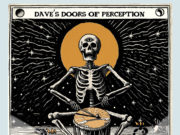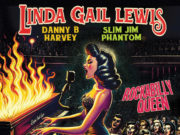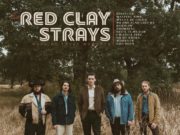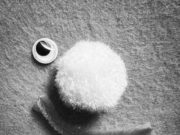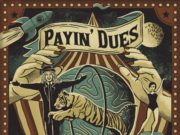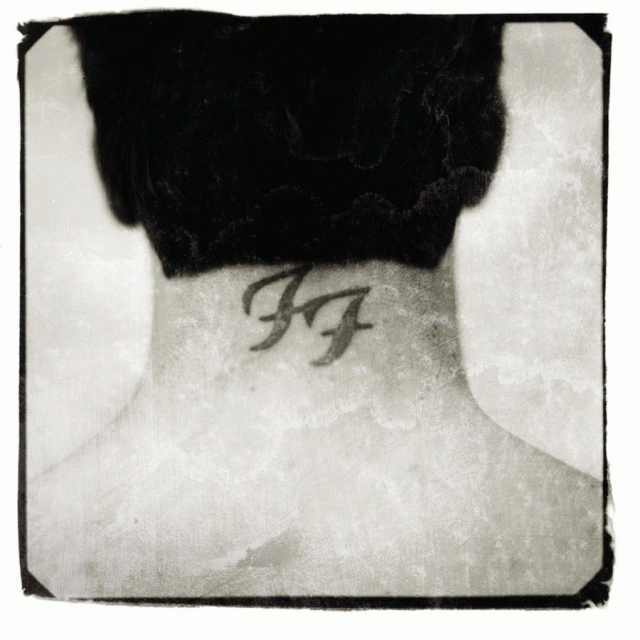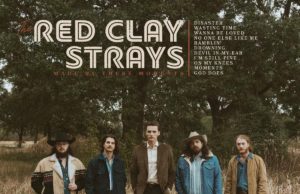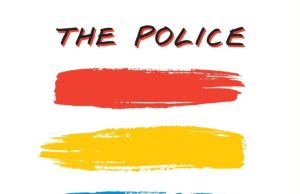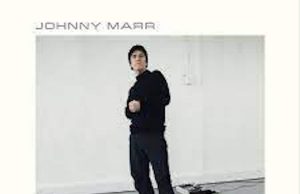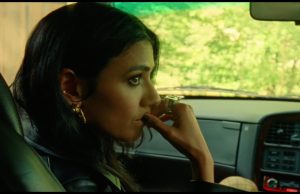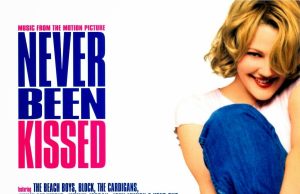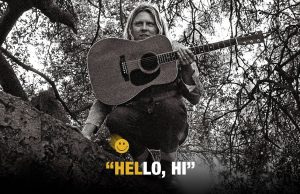Two decades ago, new albums from Foo Fighters, Bush, XTC and others were spinning away in my portable CD player. Here’s what I had to say about them back then (with some minor editing):
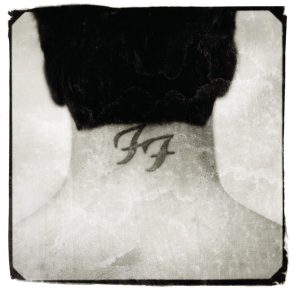
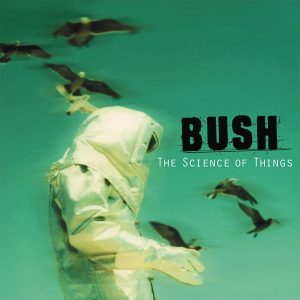 Foo Fighters
Foo Fighters
There Is Nothing Left To Lose
Bush
The Science Of Things
Is there life post-grunge? Two of the once-mighty genre’s leading proponents — Foo Fighters, led by ex-Nirvana drummer Dave Grohl, and U.K. Nirvana-be’s Bush — are about to find out. This week, both bands release new albums (their third, coincidentally) into a musical landscape vastly different than the one they inhabited a few short years ago — a world where guitars have given way to bubblepop and deejays are more valued than drummers. To stay alive, both bands have retooled their music for the millennium and tried to take their sound in new directions. Because let’s face it: No matter what the Foos might claim, for these bands, there is plenty for to lose.
Especially for Grohl, perhaps. Whether he likes it or not, his tenure with Kurt Cobain has rendered him grunge’s eternal torchbearer. From Foo Fighters’ inception as his solo studio project, it seems Grohl has been striving to shuck that mantle by slowly edging his style toward power pop, goosing jangly guitars, winsome melodies and lush harmonies with the grating rockers fans expect from him. On There Is Nothing Left To Lose, he takes a few more steps back to the future, moving deeper into the velvet goldmine of ’70s rock, in all its effects-drenched glory. Swirling, flanged guitars lurk among the thunder of Stacked Actors; bell-bottom boogie riffs jockey for position with power chords on Gimme Stitches; a Frampton voice box squawks out a melody on Generator.
But Grohl doesn’t need Peter (or anyone else( to show him the way. Over the years, he’s matured into a songwriter of surprising skill and originality, deftly able to craft songs that wield stiletto-sharp hooks while remaining engagingly unconventional. Sure, he still sometimes utilizes the tried-and-true template of quiet, slow verses and loud, fast choruses — but here the verse is likely to be a bossa nova, and the chorus a fuzzed-out noise-rock riff. On top of that, he can still rock — and primal scream — with the best of ’em. And does here time and again. That ability to please your old fans while continuing to evolve artistically is the toughest trick in rock, but here Grohl pulls it off without a hitch, turning in the best work of his post-Nirvana career. There Is Nothing Left To Lose proves he has nothing to worry about.
Which is more than I can say for Bush. Of course, it’s always been easy to hate rock pinup Gavin Rossdale and his mates. From the get-go, their sound and fury have been little more than a Cobain carbon. And now that the grunge bandwagon has totally run out of steam, the lads have obviously decided that they need a a New Sound. Trouble is, they don’t seem to have New Ideas. So, here they toss some futuristic effects on Gavin’s vocals, slap some electonica synthesizers on to tracks willy-nilly, sprinkle in a few Ziggy Stardust glam-rock riffs, add some moody, cyber-friendly song titles like Warm Machine, Jesus Online and Altered States and try to pass off all the high-tech sizzle as cutting-edge steak. But it all sounds as contrived and half-baked as the title The Science of Things — which was presumably chosen over The Science Of Like, You Know, Stuff. It’s too bad, really. Rossdale still has the ability to write a catchy riff (even if it usually reminds you of someone else’s). And you’ve got to give Bush credit for trying to get ahead of the curve. But in their case, there really is nothing left to lose — ’cause they never had it to begin with.
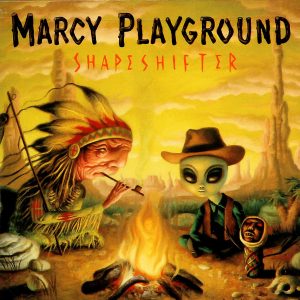 Marcy Playground
Marcy Playground
Shapeshifter
He used to want Sex And Candy. But now, it seems Marcy Playground singer/songwriter John Wozniak wants a little more respect. So on his trio’s second album Shapeshifter, he’s begun to transform into a sensitive artist, trying to balance his lighthearted, Weezer-wit pop with weightily earnest, mid-tempo alt-rockers — including one that’s basically a rewrite of (shudder) The Wreck Of The Edmund Fitzgerald. That’s all we need: Pop music that reminds you of Gordon Lightfoot. Hopefully, Wozniak will transmogrify back into a popster — and fast.
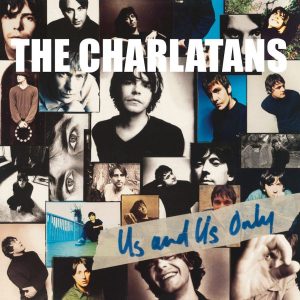 The Charlatans UK
The Charlatans UK
Us And Us Only
If you ask me, this organ-fuelled Britrock quintet have been goes toe-to-toe with Oasis for years. But for some reason, they still can’t get arrested in North America. With any luck, Us And Us Only will fix that. Opening track Forever has all the swirly groove of Kula Shaker, minus the hippie myticism. Other tracks have all the Lennon & McCartneyism of anything the brothers Gallagher have churned out. But the lads add something new to the mix — a heavy dose of Dylan’s work with The Band, conjured up in the ringing guitars, churning B-3, raspy vocals and honking harmonica of grandly powerful songs like A House Is Not A Home. Don’t let the name fool you; The Charlatans are the real deal.
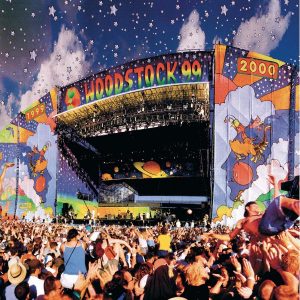 Woodstock 99
Woodstock 99
Various Artists
This unremarkable soundtrack to the controversial 30th-anniversary instalment of Woodstock comes pre-divided into two discs — a rockin’ red one (presumably for the rampaging rap-metaloids) and a mellow blue one (presumably for the bland Boomers). Disc 1 stars Limp Bizkit, Kid Rock, Megadeth, Metallica and the F-word. Disc 2 has Jewel, Dave Matthews, Sheryl Crow, Our Lady Peace and is basically musical Sominex. But it’s what’s missing that’s the real story. Disc 1 skips Fred Durst’s riot-inciting call for the crowd to “Break s—!” Disc 2 ignores the cries of “Show us your t—!” directed at Jewel and Alanis Morissette by mosh-pit lunkheads. Not that it matters. No matter how much musical revisionism producers attempt, Woodstock 99 will be remembered not for music but mayhem.
https://youtu.be/BR64uNeFuIk
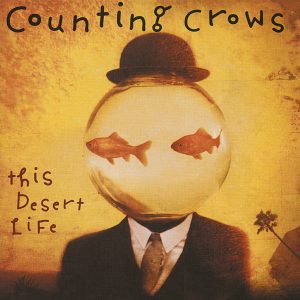 Counting Crows
Counting Crows
This Desert Life
Musical trends come and go, but the ever-mellow Counting Crows never change — they’re still the rock equivalent of carrot muffins and patchouli oil. Here on their third studio outing, they exhibit a looser, rootsier groove, mainly due to the presence of Cracker frontman and indie-rock wizard David Lowery as producer. But the bottom line is these guys just don’t know how to rock. When they aim for The Band, they come off as the bland. When they shoot for Van Morrison, they end up with Van Cliburn. The best song here is the hidden track, a Faces-like rocker called Kid Things. Otherwise, there’s no reason to buy This Desert Life — you’ll be able to hear it for free at the nearest coffeehouse.
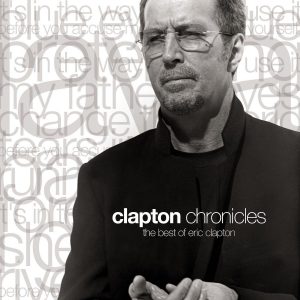 Eric Clapton
Eric Clapton
Clapton Chronicles: The Best Of
In 1965, Eric Clapton quit The Yardbirds because they were too pop. Now he writes songs for Julia Roberts and Bruce Willis movies. OK, I’m oversimplifying — but there’s no denying that over the years, Clapton has sometimes veered from idealistic blues wunderkind to FM shlock balladeer. And unfortunately, it’s this latter period that makes up the bulk of the hit-filled Chronicles, his second best-of this fall. The closest you get to new tracks are the fluff of Blue Eyes Blue (from Runaway Bride) and (I) Get Lost (from The Story Of Us). The closest you get to the old days are ’80s hits Forever Man and She’s Waiting. Sure, Clapton is still God on the guitar, but Chronicles just makes it clear it’s been far too long since he raised hell.
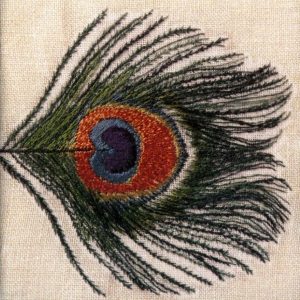 XTC
XTC
Homespun: The Apple Venus Vol. 1 Home Demos
If, like me, you’ve been eagerly waiting for XTC to follow up this spring’s incredible comeback album Apple Venus Vol. 1, well, keep waiting: Rumour is the disc did so well that Andy Partridge and Colin Moulding haven’t had time to start Vol. 2 yet. Luckily, Homespun is a worthy stand-in. The title pretty much says it all — these are the pair’s original songwriting tapes, presented here in the same order as the finished album, along with lyrics and insightful, anecdotal liner notes on the inspiration and perspiration that went into these remarkable pop gems. What’s even more remarkable is how close these songs sound to the finished products. Clearly, for XTC the bulk of the creative process is done in their heads, not in the studio. In other words, don’t hold your breath for Vol. 2.
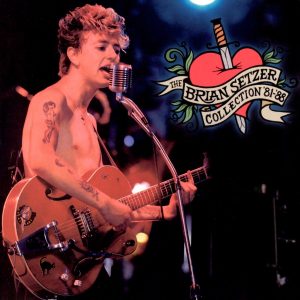 Brian Setzer
Brian Setzer
Collection ’81 – ’88
Way back before Brian Setzer wanted to be Louis Prima with an electric guitar, he wanted to be Eddie Cochran. The current king of retro swing, many of you will recall, started off as a rockabilly rebel in tattooed ’80s trio The Stray Cats. Fittingly, this retrospective kicks off with their biggest hits, Sexy + 17 and Rock This Town. Unfortunately, it devotes the bulk of its 67 minutes to Setzer’s later, unsuccessful foray into jangly guitar-rock — the era when he wanted to be Bruce Springsteen. It’s not that Setzer’s stab at heartfelt heartland rock falls flat; just that it can’t compete with what he did before and after. It’s the part of his career no one — including Setzer himself — needs to revisit.
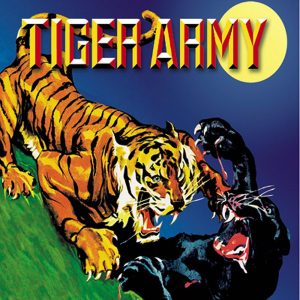 Tiger Army
Tiger Army
Tiger Army
The band name and the CD cover art suggest a bad ’80s hair-metal crew come back to life. In fact, thse boys are a crypt-kicking voodoobilly band for the next millennium. Imagine, if you dare, what The Stray Cats would sound like if Glenn Danzig wrote their songs — ‘OK, first you thump the standup bass, then you come in with some Paul Burlison guitar lines, then we all scream bloody murder, then I’ll sing, “A knife up your throat for one put through my heart,” OK?’ Yipes. No wonder they’re screaming — I would too. If I weren’t so busy rocking out. This is so creepy-cool and heavy it makes The Cramps sound like The Cranberries.
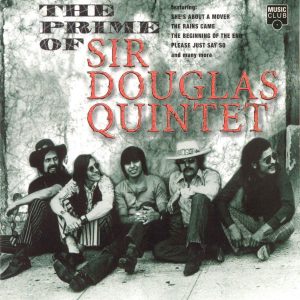
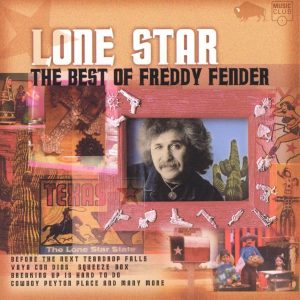 Sir Douglas Quintet
Sir Douglas Quintet
The Prime Of
Freddy Fender
Lone Star: The Best Of
Tex-Mex music fans won’t have trouble spotting the common thread running through these two discs — they both feature future members of the superstar outfit Texas Tornadoes. The Sir Douglas Quintet was Texas singer-guitarist Doug Sahm’s early ’60s rock outfit, grandly titled to cash in on the popularity of the British Invasion. Although they were more influenced by the Memphis sound than Merseybeat, their spicy Tejano frat-rock sometimes plays along with the ruse — like on Liverpool-via-Austin garage-rock classics such as She’s About A Mover and Nuevo Laredo, featuring Sahm’s finely sandpapered voice and the 69 Tears-style Farfisa of Augie Meyers (another future Tornado). Equally distinctive is Fender’s one-of-a-kind fusion of pachuco doo-wop and rustic country, on display on Lone Star in hits like Before The Next Teardrop Falls and Wasted Days & Wasted Nights. The biggest difference between the two acts: Only Fender would have the cajones to rework The Who’s Squeeze Box into a countrified fiddle-rocker — and the ability to pull it off. There’s something you won’t hear on a Texas Tornadoes CD.
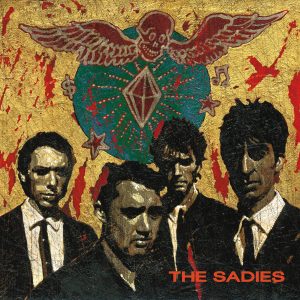 The Sadies
The Sadies
Pure Diamond Gold
To say Toronto’s Sadies have music in their blood is practically an understatement. Singer-guitarist brothers Travis and Dallas Good are the sons of Bruce Good — as in Canadian country legends The Good Brothers. But on their accurately names sophomore disc Pure Diamond Gold, these country-rock scions are staking out a darker, scragglier patch of turf than their musical forebears. You can’t miss it: It’s halfway between the spaghetti-western twang of Ennio Morricone, the hard-driving surf-rock of Shadowy Men On A Shadowy Planet and the hard-drinking Appalachian murder balladry of the Anthology Of American Folk Music. Enter at your own risk — but expect to hang around for a while when you do.
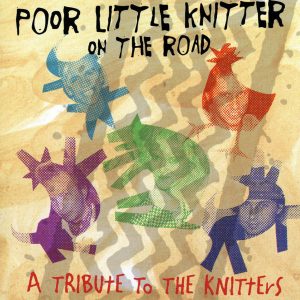 Poor Little Knitter On The Road
Poor Little Knitter On The Road
Various Artists
It all started innocently enough. Back in the ’80s, three members of L.A. punk rockers X teamed up with Blasters guitarist Dave Alvin and a standup bassist to play old country songs (and a few new ones) for the sheer fun of it. They put out one album, Poor Little Critter On The Road, way back in 1985. Little did they know they planted the seed for the whole current crop of insurgent country bands. So it’s only right that some of them start repaying that debt with Poor Little Knitter On The Road, a track-by-track reworking of Critter by bands such The Sadies, Whiskeytown, Old 97’s and Robbie Fulks. Nothing could top the original, but this comes damn close — and a newly unearthed Knitters track, Why Don’t We Try Anymore, is worth the price of admission alone.
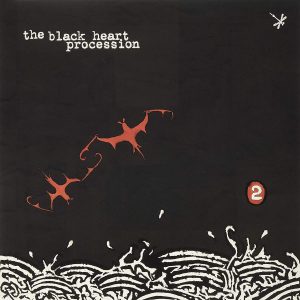 The Black Heart Procession
The Black Heart Procession
2
Just like old Hank, the boys in San Diego country-goth trio Black Heart Procession are so lonesome they could cry. But that’s all they have in common. While these boys definitely have a tear in their beer in this second CD, their grim tales of torment and desolate, funereal melodies have less to do with the country twang of Williams than the tragic balladry of Will Oldham. Perhaps with a dash of Tom Waits on the side, thanks to some compellingly rustic instrumentation in the form of wheezing pump organs, weeping saws and clanking sheet metal. All they want to know is why you don’t love them like you used to do.
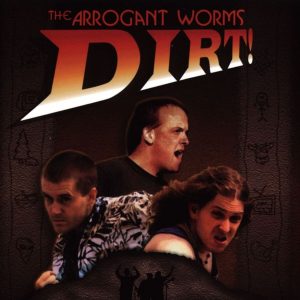 Arrogant Worms
Arrogant Worms
Dirt
No matter what you think of these Canadian musical comics, you’ve gotta give ’em their props: Dirt is their sixth — repeat, sixth — album. Any act that can survive that long these days has got to be doing something right. Actually, on Dirt Arrogant Worms are doing quite a few things right — like spoofing Celtic music, pondering the mysteries of sponges, Chinese buffets and blue-collar shlubs, and best of all, proclaiming their undying (and unsavory) obsession with Celine Dion (“My heart goes on and on … and I can see your house from my van”). Eat It it ain’t, but it’s good enough to ensure the Worms will be around to see album seven — not to mention a restraining order from Celine.
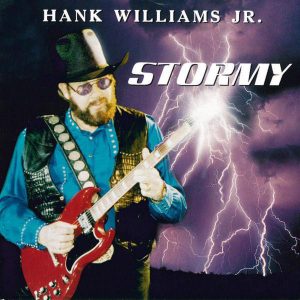 Hank Williams Jr.
Hank Williams Jr.
Stormy
Lord knows there’s no good reason to like Hank Williams Jr. Not after listening to his umpteenth country-shlock outing Stormy, anyway. Not after hearing him proclaim that the tune I’d Like To Knock The Hell Out Of You is “The perfect country and western song.” And especially not after he follows it up with idiot-boy numbers like Naked Women And Beer and Hank Hill Is The King, two songs that make it painfully clear Bocephus spends more time thinking up titles than he does writing melodies for them. But no matter how banal he gets, li’l Hank is so unabashadly redneck, so doggoned happy to be life of the trailer-park party, it’s hard not to shake your head and smile at the big harmless lug. Especially when he whoop-whoop-whoops like Curley Stooge.
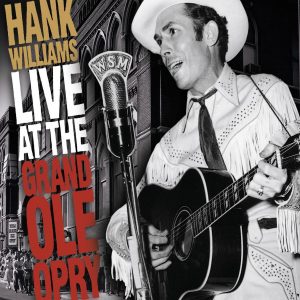 Hank Williams
Hank Williams
Live At The Grand Ole Opry
It was the Electric Circus of its day: The Grand Ole Opry, broadcast every Saturday night from Nashville. And on many of those Saturday nights between 1949 and ’52, country legend Hank Williams was there. This two-CD set compiles those performances — much of them available here for the first time — all the way from his first hit Lovesick Blues through his heyday with Cold, Cold Heart and Hey Good Lookin’, and on to his final appearances months before his untimely death. You also get plenty of extras: A couple of good essays, comedy bits with Hank yukking it up with Minnie Pearl, gospel numbers, interview segments and a whole Opry show just for context. But Hank’s soul-baring lyrics and spine-tingling voice are still the real stars, just like they were half a century ago.


